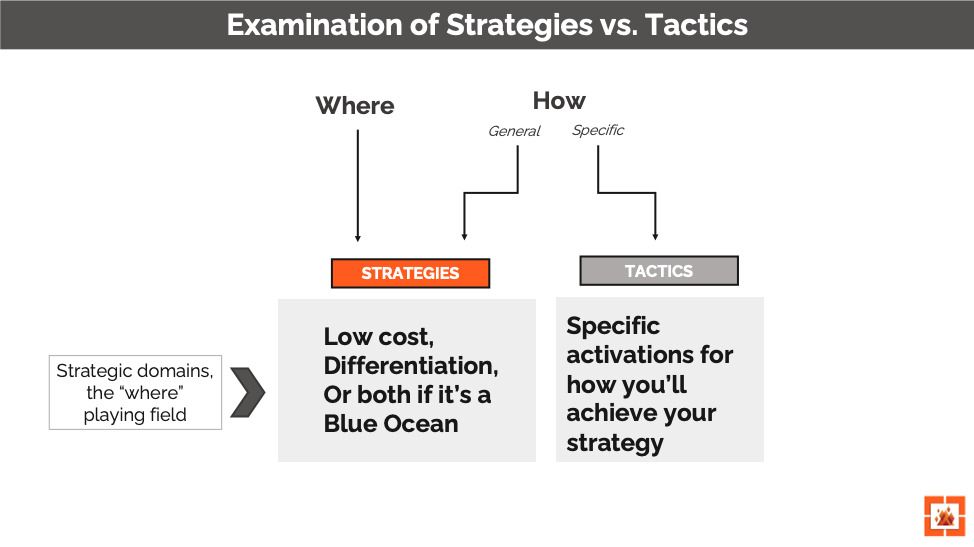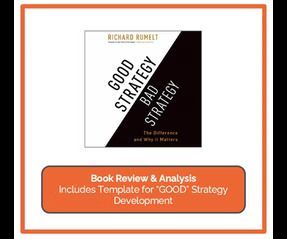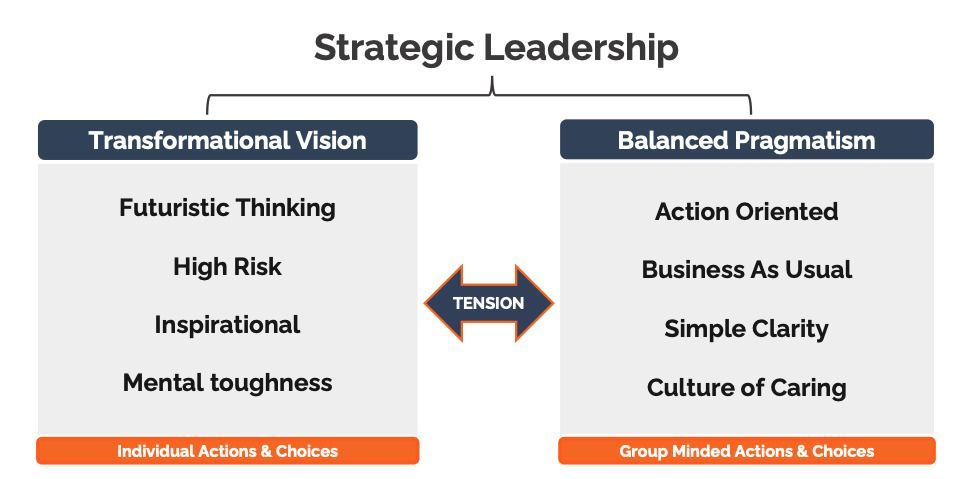Jumbo List: 45 Types of Business Strategy You Need to Know
By Adam Fischer • May 16, 2023
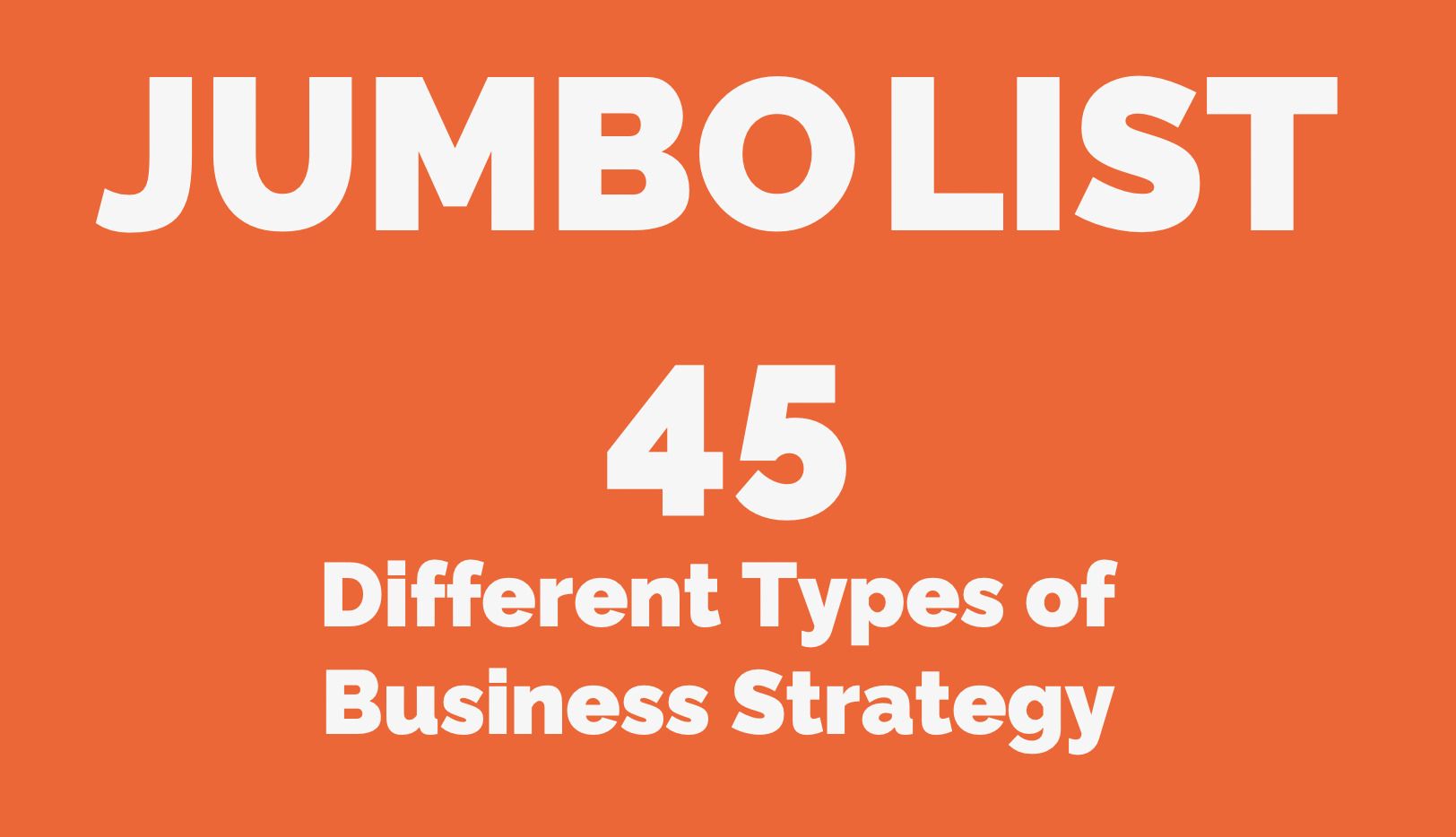
Despite the infinite list of business strategies that exist, the most I found in a single article online only shared 10. I’ve jotted down this jumbo list to get all the strategy types I had top of mind in one place, aiming to get a sense of the strategic universe. This is crammed with organizational level strategy, guerilla strategies, Porter’s generic strategies, and quite a few more. Keep in mind, the detail is high level; this list is about magnitude, not depth.
To boil things down, I once heard a wise man say "it's all about building the brand and driving growth." Keep in mind the hierarchical nature of strategy; building your brand and driving growth will likely be high level goals your subordinate strategies should ladder up to. Also, monikers like "competitive strategy" can be dangerously vague. Do you need to focus on the competition? Or should you instead be intensely focused on customer strategy? Some company's, like Amazon, don't frame their actions in terms competitive strategies because of their strict customer focus.
We all joke about how “there’s an app for that.” The same goes for strategy; there’s one for everything. Even with this huge list, there’s plenty to add. In fact, I overlooked “emergent strategy.” This is ironic because it’s perhaps the only strategy that actually exists; it’s the only one that becomes implemented. It’s a strategy created to respond to unplanned events, new information, and new objectives. Emergent strategy is a polished way of admitting “our crystal ball fell on the floor and broke again, but we’re being strategic about it.”
Any other strategies not make the list? Let us know.
1. Organizational Strategies
These types of business level strategies include corporate strategy and other subordinate strategic agendas.
2. Corporate Strategy
This is the top of the organizational strategy pyramid, where long term goals and objectives are defined and other strategies cascade underneath and within. Think of how the corporate strategy of Alphabet determines how Google and other subsidiaries maximize profit by creating a somewhat closed ecosystem for each business unit.
3. Business Unit Strategy
This is strategy formulated at the level of a particular business unit, such as the personal care business unit of a big player like Unilever, that guides the unit’s overall objectives.
4. Functional Strategy
This strategy seeks to improve the implementation of business and corporation strategies. It can include a multitude of other strategies, such as production strategy and marketing strategy.
5. Program-Level Strategy
A marketing activation of some kind, such as a seasonal campaign, where strategy is developed and executed.
6. Operating Strategy
A more granular level of goal setting for specific areas of a business unit, such as certain geographic zones, e.g the Northwest sales region.
7. Acquisition Strategy
Purchasing and merging with another organization to drive synergy and growth
8. Financial Strategy
Using business context to maximize value creation for the enterprise and stakeholders.
9. Generic Strategy
Michael Porter defined four “generic” strategies that drive competitive advantage:
10. Cost Leadership
Gaining a competitive advantage by reducing the cost of production and passing cost savings to the customer in a broad market.
11. Cost Focus
Competing based on price to target a narrow market. You may not be the lowest-priced brand overall, but you’re the lowest price relative to your direct competitive set. For example, Rite Aid may have higher priced soda vs. Dollar General, but if it is priced lower than Walgreens, this is a cost focus strategy.
12. Differentiation Leadership
Differentiation leadership is characterized by offering a distinct positioning to a fairly broad target market, focusing on the main needs and wants.
13. Differentiation Focus
Offering unique features that fulfill the demands of a narrow market. A good starting point for smaller firms that don’t want to compete with larger players head on.
Porter's generic strategies above are helpful for identifying, at a high level, where you want to put your emphasis to win in the marketplace. A good approach to using this blog to inform strategic thinking: choose one of Porter's generic strategies to focus on, and pick one or several of the other strategies in this list to help reinforce that high level strategic position.
14. Operational Strategy
Often controversial as to whether this is a true strategy, as opposed to a best practice, this refers to eking out the greatest efficiency possible in business activities, with manufacturing as a prevalent focus area.
15. Fast Follower Strategy
Letting a competitor take on the risks and costs of establishing a market beachhead, then entering the market yourself.
16. Blue Ocean Strategy
The strategy of creating an uncontested market space by pursuing both differentiation and cost leadership.
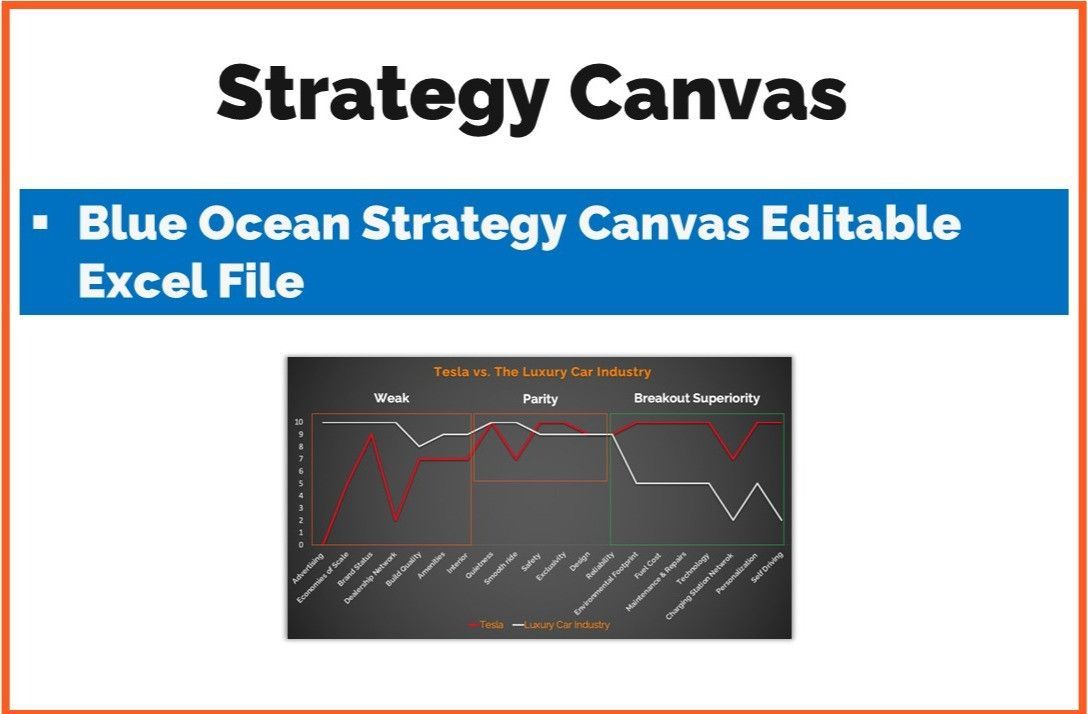
Blue Ocean Strategy Canvas Template
17. Price Skimming Strategy
Launching a differentiated product at a high price that only early adopters will pay in order to recoup investment costs, then reducing the price over time in order to expand your customer base. This can upset customers, as it did in the case of the initial iPhone launch in which Apple dropped the price of the phone by $200 just two months after it was launched.
18. Sales Strategy
Broadly speaking, this is how you position your offering in the marketplace. Can be as expansive as how your sales organization (sales people and process) is run and as granular as the sales strategy for a specific product or service.
19. Growth Strategy
A plan for expansion. This overarching strategy breaks down into four segments:
20. Market Penetration
Taking market share from existing companies by acquiring their customers.
21. Market Development
Exploring new markets or new customers, or expanding current markets.
22. Product Development & Innovation Strategy
Creating new products and processes.
23. Diversification
Diversifying your organization at any number of levels, from the business unit to product level.
24. Competitive Strategy
Positioning your business in a way that drives a unique proposition via a unique set of activities and resource utilization, to your customers vs. the competition. Remember, it's not just about creating value, it's about creating more value vs. you competitors in areas you both compete. The concept of competitive strategy relates to Porter's generic strategies – here's a helpful resource.
25. Marketing Strategy
There are too many different types of marketing strategy to list here, but maybe this will be enough to get you started …
26. Affiliate Strategy
Selling other companies’ products and services for a nominal commission fee.
27. Guerilla Strategy
Using your agility and ingenuity in order to defeat larger and clumsier competitors, often through surprising and unexpected approaches especially good at breaking through the noise. Often linked to viral marketing.
28. Go-to-Market Strategy
A plan for reaching customers and achieving a competitive advantage.
29. Human Resource Strategy
How human capital is attracted and grown within and organization.
30. Digital Strategy
Overarching term that encompasses how a firm leverages digital technology to create value and earn customers.
31. Consumer Strategy
Understanding the needs, wants, desires, pain points, etc. of your target market in order to win preference and loyalty.
32. Segmentation Strategy
Delineating between consumer groups across demographics, psychographics, and behaviors and choosing the most appropriate target given your business proposition.
33. Audience Strategy
Similar to a segmentation strategy, often greater in number and linked to digital campaigns. Also known as cohort strategy.
34. Social Media Strategy
Attempting to appeal to customers on social channels by interrupting their online conversations with potentially relevant products or services based on their social media profiles and actions.
35. Content Strategy
Driving business objectives by developing assets like blog articles, video, and other information that delivers customer value.
36. Outdoor Strategy
Using outdoor advertising, primarily billboards, to attract and engage customers.
37. Grass Roots Strategy
Handing out flyers or knocking on doors in your local community.
38. Media Strategy
Choosing the right media vehicles to interlock with and deliver digital, consumer, and higher level strategies.
39. Pricing Strategy
Pricing your offering to deliver against your objectives. Lower pricing may increase market share. High prices may increase profit but reduce demand. You seek to capture the highest WTP (willingness to pay) vs. your cost of goods in order to maximize profitability.
The product lifecycle has a big impact on pricing strategy. This journey involves several key stages: introduction, growth, maturity, and decline. During the growth phase, characterized by surging sales, smaller businesses often opt to maintain higher price points. This approach is effective when the product boasts unique features or superior quality compared to competitors. Customers are willing to pay a premium in these scenarios. Companies leverage high prices during the growth phase if they possess cutting-edge technologies in high demand.
40. Retail Strategy
How a retailers deliver a superior customer experience.
41. Personalization Strategy
An analytics-driven approach to deliver the right advertising and products to the right person at the right time.
42. Promotion Strategy
Leveraging tactics such as price markdowns and coupons in order to generate interest.
43. Connected Strategy
Development of a sophisticated customer feedback loop in order to deliver the greatest value possible with your offering. Similar to personalization strategy but with a greater scope that includes new product development, uses new revenue models, and incorporates new technologies.
44. Entrepreneurial or Small Business Strategy
The strategies needed to launch a new venture. Can include business plan development, gathering resources and investment, and go-to-market strategy.
45. Channel Strategy
How you get your product or service to the customer. You may decide to sell through online or retail partners, or employ a direct-to-consumer strategy, for example.
Time to take a breather from that long list!
When it comes to choosing the right strategy, whether at the corporate, business, or brand level, you'll want to ask yourself and your partners important questions like:
- What level of risk are we willing to take? Some strategies are riskier than others.
- Is now the right time to implement a new strategy? Counterintuitively, sometimes the best time to reinvent your business model and strategy is when everything is going well, so you don't end up like Kodak.
- What businesses can we benchmark against? Find competitors who've placed big bets, and see who the winners and losers are.
- Where is the current market today, and how will it shift in the near and long term. You should have a sense of immediate vs. long term change on the horizon.
- Remember to coordinate and over communicate your strategic plans and decisions all the way from CEO to cashier - strategy is the sum total of all that you do.
Any strategies not make the list? I just realized that “global” and “local” strategy went unnoticed. Help make the list complete by sharing your thoughts.
Adam Fischer is a marketer with 10+ years of experience in brand management and digital marketing. He’s challenged conventional assumptions and taken bold moves to drive growth for small businesses like Dogeared Jewelry to multi-billion-dollar companies like CVS Health and Nature Made Vitamins. He leverages his B.S. in Philosophy from Northeastern University to ask questions that get to the heart of business issues, while his MBA in Marketing from the Thunderbird School of Global Management at ASU translates management philosophy into real strategic growth.
Insights to fuel your marketing business
Sign up to get industry insights, trends, and more in your inbox.
Contact Us
We will get back to you as soon as possible.
Please try again later.
Latest Posts
